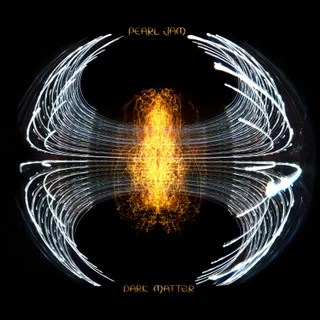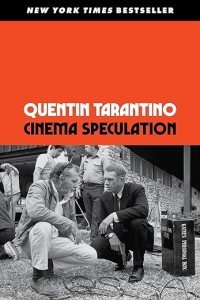 It’s easy to forget these days, 33 years after Ten introduced Pearl Jam to the world, just how much new music from them was anticipated. When their sophomore album, Vs., was released it broke all sales records for the first week of any release. But as with anything, familiarity breeds a certain level of contempt. Pearl Jam’s star is faded now, a totally expected reality in a day when rock music is all but dead and the band has assumed the status of “elder statesmen.” In an odd way, their current level of popularity is likely what the band hoped for before Ten was released, and what they wished for after that album turned them into multi-platinum, voice-of-a-generation, icons. The insane levels of fame the band achieved never sat well with the members, especially their guiding light Eddie Vedder, who would probably be just as happy selling albums out of the trunk of his car. They didn’t want to be bigger than the Beatles; they only wanted to be as big as Fugazi.
It’s easy to forget these days, 33 years after Ten introduced Pearl Jam to the world, just how much new music from them was anticipated. When their sophomore album, Vs., was released it broke all sales records for the first week of any release. But as with anything, familiarity breeds a certain level of contempt. Pearl Jam’s star is faded now, a totally expected reality in a day when rock music is all but dead and the band has assumed the status of “elder statesmen.” In an odd way, their current level of popularity is likely what the band hoped for before Ten was released, and what they wished for after that album turned them into multi-platinum, voice-of-a-generation, icons. The insane levels of fame the band achieved never sat well with the members, especially their guiding light Eddie Vedder, who would probably be just as happy selling albums out of the trunk of his car. They didn’t want to be bigger than the Beatles; they only wanted to be as big as Fugazi.
Pearl Jam’s reputation was carried on the back of their concert performances. They are one of the most exciting bands to ever take the stage. Their studio output, strikingly consistent, now sells a fraction of what those early albums sold and there’s no question the band has settled into their status as rock legends with nothing particularly new to say. Since 1998’s Yield, an album many (not me) consider to be their finest, they’ve released a string of good albums that would never, and could never, fire up a new audience like Ten, Vs., and Vitalogy did three decades ago. Binaural, Riot Act, the fun but lightweight Backspacer, the tepid and boring Lightning Bolt, and the experimental but uneven Gigaton all had their moments of greatness, but the band frequently sounded like they were going through the motions. Only on their criminally underappreciated eponymous 2006 album did the band show their old fire on any sort of consistent basis. The Pearl Jam album stands with their best work.
Now in 2024 comes another new album, Dark Matter. The album was hyped by the band with Vedder calling it “the best we’ve ever done” and guitar god Mike McCready extolling the virtues of the band’s new heavier (!) rock.
So is it the best, heaviest record they’ve ever done? Nope. Does that mean it’s not good? Also, nope. In fact, Dark Matter is the best album the band has put out since 2006, when the war in Iraq fired up Vedder’s righteous indignation and inspired some of the band’s most ferocious playing. The new album is far less political and more personal, though politics does enter the mix at times (fortunately not in the ham-fisted way it did on Gigaton).
Musically the stars of the show on this album are guitarist Mike McCready, whose revved-up solos are among the best he’s ever done, and drummer Matt Cameron. Apparently the guys in Pearl Jam pressured Cameron to really cut loose on this album, to play like he used to in Soundgarden, and the drummer responded. Dark Matter contains much of Cameron’s finest work, his best work with Pearl Jam, and is one of the great drum recordings of the rock era. He always tended to get a little lost in the shuffle of great drummers who came out of the alternative rock scene because Soundgarden was always something of a faceless band with the exception of Chris Cornell. Dark Matter is the definitive proof that Cameron is right up at the pinnacle of great drummers from Keith Moon and Ginger Baker to Dave Grohl and Jimmy Chamberlain. Throughout Dark Matter, Cameron swings like the great jazz drummers, plays fills like Ringo after a shot of speed, and pounds like Bonham. It’s never less than a thrilling performance.
From the outset, a pair of adrenalin-fueled propulsive rockers named “Scared of Fear” and “React, Respond” the mission statement of the album is evident. This is Pearl Jam as God intended them to be. The experimentation with different textures and rhythms from Gigaton is gone, and the band has clearly woken from the slumber in which they recorded Lightning Bolt. In their place is the fast-paced, stripped down sound of Vs., mixed with the adult songcraft of Yield. In short, Pearl Jam is still alive.
The intensity drops a few notches with “Wreckage”, which bears a passing resemblance to Tom Petty’s “Learning to Fly” before picking up again with the title track. “Dark Matter” may not be the fastest or punkiest track on the album, but it is certainly the heaviest. Matt Cameron provides a rock-solid anchor mixed with ridiculously fast fills as Mike McCready and Stone Gossard play slab-of-granite riffs and Eddie Vedder summons all his considerable passion into the vocal.
Throughout the album Pearl Jam isn’t afraid to embrace the contradictions that made them such an exciting and intriguing band from the beginning. Whether it’s arena-ready mid-tempo rock (“Won’t Tell”), sped-up punk (“Running”), acoustic-based rock ballads (“Setting Sun”), Who-ish ravers (“Got To Give”), or catchy pop (“Something Special”), they deliver some of the best songs they’ve done in their lengthy career. Best of all is “Upper Hand,” a nearly six-minute track that begins like a U2 outtake from The Joshua Tree, settles in to a beautiful ballad that features Vedder’s best vocal on the album, and then inexorably builds until it explodes into a volcanic McCready guitar solo.
Producer (and credited co-songwriter) Andrew Watt is a Pearl Jam fan who seems to be specializing in giving a boost to rock bands that have been showing their age (he also produced the latest Rolling Stones album, Hackney Diamonds, their best in decades). The album was written and recorded in just three weeks which tells me the key to the success of Dark Matter is that Watt didn’t give the band time to overthink things, unlike the previous two albums. The result is a late-era Pearl Jam album that hangs comfortably with their 1990’s prime releases.
Grade: A


 It’s an easy mistake to make, to judge The Monkees by their hit singles without ever diving any deeper. After all, it’s not like they were a real band driven to make artistic statements over the course of an LP. But easy or not, it’s a mistake. In fact, the Monkees albums are a virtual treasure trove of potential hits; with a band constructed to be a hit machine, virtually all of the songs that were given to them were viewed as potential singles, and the songs written by the band members were their attempts to break the stranglehold the producers held over their product.
It’s an easy mistake to make, to judge The Monkees by their hit singles without ever diving any deeper. After all, it’s not like they were a real band driven to make artistic statements over the course of an LP. But easy or not, it’s a mistake. In fact, the Monkees albums are a virtual treasure trove of potential hits; with a band constructed to be a hit machine, virtually all of the songs that were given to them were viewed as potential singles, and the songs written by the band members were their attempts to break the stranglehold the producers held over their product.